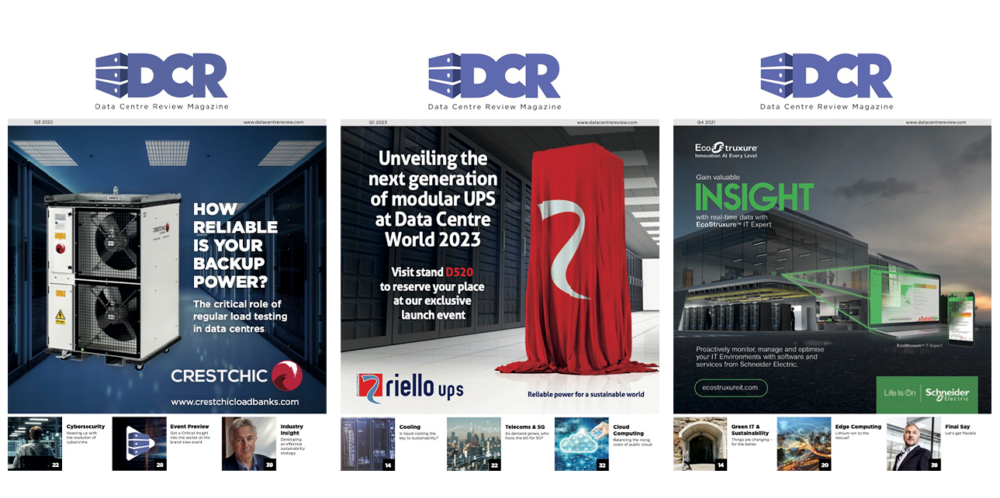Tim Hysell, co-founder and CEO at ZincFive, argues that re-engineering backup power with nickel-zinc technology could unlock denser, greener facilities and keep the AI era’s data-hungry growth on track.
The surge in AI and cloud demand is driving a race for data centre capacity. Nearly every week, headlines highlight major tech companies securing real estate – whether repurposing existing buildings or breaking ground on new facilities.
During the last half of 2024, some of the projects making the news include:
- Microsoft’s acquisition of 300 acres in Western Michigan that the company expects to develop into a data centre.
- Facebook’s parent company, Meta, plans to build a data centre on a 1,500-acre property near Indianapolis and another one on a $5 billion piece of land near Monroe, LA.
- In October, Amazon paid $277 million to acquire 220 acres near Phoenix for potential data centre development.
- In September, the media reported that demolition began on the former Chicago headquarters of retail giant Sears in preparation of turning the 273-acre lot into a data centre.
These projects represent just a few such US deals. Many of these companies are also constructing facilities overseas.
Taking the Amazon land purchase as an example, at $1.25 million per acre, the land itself is very costly – making it crucial for the hyperscaler to maximise the space and optimise the design. While advancements have led to much higher density racks (from 5kW in 2017 to 50kW for HPC, AI/ML workloads) and have shrunk the amount of IT space needed to support the loads, the accompanying mechanical and power systems have not decreased form factor at the same rate.
Without careful planning and optimisation, data centre builders could end up with 80% of the physical space dedicated to mechanical, electrical and plumbing systems, with only 20% dedicated to actual IT equipment.
Surging demand, dwindling capacity
Consulting firm McKinsey & Co published studies in 2024 that illustrated the high demand for more data centre capacity. McKinsey wrote in October that the size of the US colocation data centre market has doubled in just four years, while vacancy is at 3%, a record low. McKinsey noted that while prices charged by colocation providers in most primary markets fell steadily between 2014 and 2020, they jumped 35% from 2020 to 2023.
Acquiring enough square footage is only one of the obstacles data centres face. Accessing enough electricity to feed the power-gobbling processors is also a significant hurdle. As of now, not every utility service has the transmission infrastructure in place to handle the needed quantities of electricity.
Backup power presents opportunities
Maximising a facility’s resources, then, is critical, and opportunities exist for managers to get more out of their backup power.
Data centres typically employ an uninterruptible power supply, a battery backup system that ensures critical systems have access to an energy source in case of a power outage or another emergency. For decades, lead-acid batteries were the preferred data centre power source, but nickel-zinc (NiZn) battery technology has rapidly become an alternative.
Nickel-zinc chemistry possesses between three times the power density of lead-acid while coming in forms that are half the size and weight. Its higher density also enables faster charge and discharge rates, providing an enhanced ability to optimise infrastructure design and support AI densification.
Unlike lead-acid, NiZn batteries can operate at higher temperatures and still maintain three times the life expectancy of traditional lead-acid. They are also inherently safe and don’t exhibit thermal runaway at the cell level. Employing nickel-zinc means data centre managers can spend less money to cool and replace battery systems with nickel-zinc backup power.
Lastly, nickel-zinc technology offers more scalability and flexibility than alternative chemistries. Because nickel and zinc are materials four and five times more abundant, respectively, in the earth’s crust than lead or lithium, they’re highly available and enable users to scale up deployment of production factories in less time.
Depending on how AI and data centres develop over time, such speed could come in handy.
But the strategic conversation cannot end at chemistry comparisons. Backup power is fast becoming a board-level differentiator – one that touches sustainability mandates, grid-interconnection timelines and even brand trust. Operators that view their UPS rooms as dormant insurance policies could struggle to compete with peers who treat stored energy as a flexible asset capable of peak-shaving, grid services or carbon-offset participation.
In that light, the question shifts from ‘Which battery fits?’ to ‘Which architecture future-proofs the business?’ Nickel-zinc offers one such path, yet any solution must be evaluated through the lens of total energy economics, regulatory pressures and supply-chain resilience.
By turning to a solution like nickel-zinc technology, data centre managers could not only boost their efficiency and optimise density, but they could also help prepare themselves for whatever changes the future brings.



